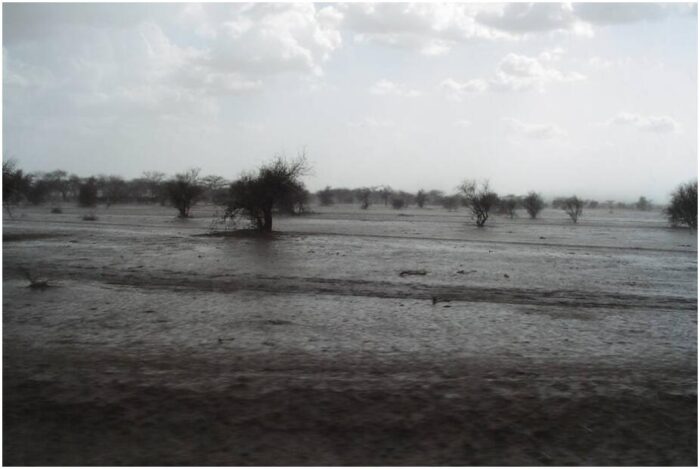The central African state of Chad was a French colony until 1960. With around 15 million residents and a land area of 1.284 million km², Chad is the fifth largest country in Africa with a very low population density. Oil has been produced in the south of the country since 2003, which has a major impact on Chad’s economy.
Country overview
According to a2zgov, Chad is a landlocked country in Central Africa. Lake Chad in the west of the country with an area of 1800 km² is a paradise for ornithologists. The country is relatively sparsely populated and, despite its oil wells, is one of the poorest countries on earth.
History
After independence from France in 1960, Chad was ruled by civil wars and rebel movements for over three decades. It was not until Idriss Déby came to power in 1990 that the first steps towards a political and economic transformation were begun, which, however, have declined again due to the Darfur crisis and domestic political divergences.
Economy
The economy of Chad has been determined by this sector since oil production began in 2003. Otherwise industrial production only plays a marginal role in the country. Formal employment relationships are rare; In addition, qualifications often take a back seat to political and ethnic criteria.
Society
There are more than 120 languages in Chad, spoken by over 200 different ethnic groups. The socio-economic structure of the society of the ethnic groups differs very strongly and thus leads to great cultural heterogeneity.
Practical Information
Despite the difficult living conditions in Chad, you meet many hospitable people in everyday life who know how to convey the specifics of their country.
Official name: Republic of Chad
Area: 1.284 million km²
Residents: 16.8 million (2020, estimated)
Growth of population: 3.18% (2020, estimated)
Seat of government: N’Djaména
Official languages: French, Arabic
Regional languages: Ngambay, Dazaga, Kanembou
Country impressions
Some country’s impressions give a first visual insight into this complex country and photographs of Le Tchad Virtuel show scenes of land and Leuten.Die research areas in the north of the country are impressively illustrated by S.Kröpelin and Baba Malay documented.
Basic data
The CIA World Factbook and the World Bank provide an up-to-date overview of important basic data on the state, economy and population of Chad, as do the statistics department of the UN and the national Chadian statistics institute INSEED. The Federal Foreign Office offers a first compact overview of the country. More detailed information in German is available from the Federal Agency for Civic Education.
Natural space
Natural resources
The Chad has many undeveloped especially in the north Tibestigebirge mineral resources, including uranium -, gold, tin, tungsten, and bauxite deposits. To the northeast of Lake Chad, soda is extracted and, in several places in the Sahara, rock salt, which is primarily intended for the markets in the south of the country. Gold has been sought and extracted
in Mayo Kebbi since 1992 and in Tibesti since 2013. Oil fields are located in the Doba Basin (southwest), near Sarh, Bongor and on Lake Chad. Since 2003, the first crude oil from the Doba Basin has been flowing through a pipeline over 1000 km long
to the port of Kribi (Cameroon). Additional oil fields have been developed in recent years near Bongor and further north.
Flora and fauna
The natural landscape of Chad is interspersed with wet savannah areas in the extreme south, which, however, merge into dry savannah when the precipitation limit is around 1000 mm. Characteristic of the dry savannah are baobab (baobab trees), kapok and shea butter (karité and néré trees, the latter two being the most important useful trees (fatty fruits). The river banks are lined with gallery forests.
Further north is the thorn bush savannah (from around 500 mm annual rainfall), which is considered characteristic of the Sahel regions. The vegetation here consists of thorn bushes, shrubs and grasses, which, however, wither during the dry season and decline due to excessive grazing. The most important tree in this vegetation zone is the umbrella acacia (Acacia albida), which serves as a feed supplier for grazing animals. Other important crops are the acacia Senegal, which supplies the gum arabic, and the date palm, which can be found in the oases of the northern areas.
Until the mid-1970’s, Chad had an extremely rich wildlife population that was protected by a wide network of national parks and reserves. Decades of civil war and many years of drought meant that today only small populations of this unique animal world have survived. In the north you can still find rare antelope species (Dama, Addax), more widespread are the Dorkas gazelles, desert foxes (fennecs), jackals, hyenas and marabous. According to reports from the Sahara Conservation Fund, Chad and Niger have joint action plans through cross-border measures better protect endangered species. In August 2016, the first sable antelopes were released back into the wild in Chad. This rare species was found in large parts of North Africa a few decades ago, but has been considered extinct in the wild since the 1990’s.
The Lake Chad area is home to hundreds of species of birds, as the lake is home and resting place for millions of migratory birds from Europe.
In the southern part of the country there are still herds of elephants (in and around the Zakouma and Manda National Park), but these are threatened by poachers and have been terribly decimated as a result over the past decade. Larger mammals are also giraffes, lions, leopards, wildebeests, warthogs, gazelles, hyenas and many different species of monkeys. The region around the unique lakes of Ounianga in Ennedi has been a UNESCO World Heritage Site since 2012. The Ennedi Mountains were added to the World Heritage List in mid-July 2016. The Zakouma National Park and Lake Chad are on the UNESCO World Heritage List.
